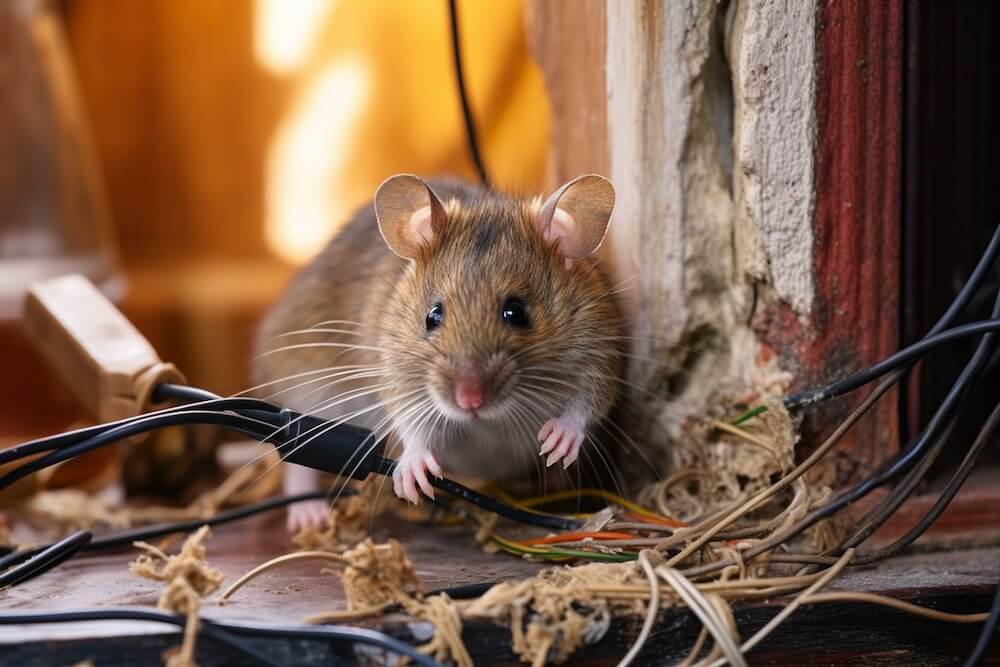Your home is a sanctuary where you find comfort and shelter. Unfortunately, homeowners often aren’t the only ones who find peace within the walls of a house. Rodents, pests, and other uninvited guests can move in unexpectedly, turning your once cozy environment into a battleground.
Part of handling rodent removal is understanding what you’re dealing with. Not all methods are as effective on one species as they are on another. This article is the Washington homeowner’s guide to understanding and recognizing these home-crashing critters. Armed with this information, you’re on your way to evicting these frustrating squatters!
House Mice
Let’s start with the aptly named house mouse. These mice are relatively small compared to their rodent counterparts, usually growing up to eight inches long, accounting for the body and tail. Despite their tinyness, their trademark beady eyes, large ears, and pointed muzzles make them easy to pinpoint.
House mice are primarily attracted to food sources and can find their way into your home through your yard. They’ll start by rummaging through open trash or bird feeders. They’ll usually let themselves in once they find a crack in your foundation. It’s the perfect place for them to make their nest.
House mice might look innocent and cute, but they’re not something you want in your home. They can damage the infrastructure, chewing through wires, drywall, and insulation. They can also contaminate food and spread diseases like salmonella and leptospirosis.
Deer Mice
Deer mice can be slightly smaller than house mice, clocking in at around six to nine inches. The main difference is that their tail is usually the longest part of their body. They also have darker brown fur and white or light underbellies with larger eyes and ears.
Deer mice prefer to live outdoors but hide inside homes in the late fall and winter to keep themselves warm. They’re uncommon in urban areas since they prefer open outdoor or wooded spaces. These mice also like to make themselves inconspicuous, hiding in secluded areas of your home, like crawl spaces and attics.
These pests carry dangerous diseases like hantavirus. Their presence can also introduce fleas, ticks, and mites into your home. And just like most rodents, they’ll chew through anything and leave excrement and saliva everywhere, making surfaces unsanitary. Rodent removal is the best way to rid yourself of deer mice since they’re particularly agile and can hide in some hard-to-reach places.
White-footed Mice
This rodent looks like a hybrid of the deer and house mouse. They have darker coloring but light underbellies that go right down to their feet. The most significant identifier for the white-footed mouse is their oversized ears, which are disproportionate to their tiny bodies.
White-footed mice nest in hidden places like tall grass or tree stumps. When they enter your home, they’ll act like deer mice and hide in tucked-away spots like your basement or attic.
Rodent removal is imperative if you have white-footed mice for a few reasons. The most problematic is that they can carry the bacterium responsible for Lyme disease. They can also populate reasonably quickly, like most rodents. A group of these pests can damage farm crops and gardens in the blink of an eye.
Wood Rats
Wood rats look like large mice since they don’t have the classic scaly tale that other species have. Their tails are usually bushier, their ears are more prominent, and they have a wider variety of coloring than roof or Norway rats. And with bodies that reach 18 inches long, they’re much more noticeable than any previously mentioned rodents.
These pests are attracted to gardens, bird feeders, and fruit trees. If you have these pests outdoors, they’ll likely find their way into your home if they sense a warmer environment and more prevalent food source.
Wood rats are highly destructive since they use various materials to create intricate nests. Aside from the obvious issues of having rats in your home, like health risks and damage to your property, these thieves can also steal personal effects like keys and jewelry — another good reason to call for rodent removal if you suspect you have these critters in your home.
Roof Rats
The roof rat has a distinctly coloring, usually dark brown or black. They’re slimmer than other pests but can grow up to 16 inches. You’ll primarily find roof rats making their nests in the upper levels of a home, thanks to their impressive climbing skills.
Don’t encourage roof rats to visit your property. Pet food, open food in trash cans, or compost bins can attract them to your yard and, eventually, your home. They also live in colonies, meaning a family usually moves in together. Roof rats are primarily nocturnal, so you won’t hear much from them during the day.
These rodents are highly dangerous and can cause major health concerns. And they’ll damage your home’s infrastructure and your personal belongings. Call for professional rodent removal if you suspect your home harbors roof rats.
Norway Rats
You can easily identify the Norway rat thanks to its blunt nose and light-colored underbelly. They also have smaller ears than other species and brown fur dappled with black hair covering their larger bodies.
Norway rats can be especially problematic for those living by bodies of water. They’re generally heavy-set, so most of their nesting happens on the ground floor or basement of a building.
These rats are just as dangerous as any other rodent regarding health risks. However, they have a special knack for tearing through almost anything. This means that nothing in your home is safe — they will eat through everything from pipes to walls and floors.
Call for Home Rodent Removal
If you suspect you might have any of these common rodents in your Washington home, call Attic Projects for professional rodent removal. Reach out to our pest control team today to learn more about our process and get your free inspection to put your mind at ease.




